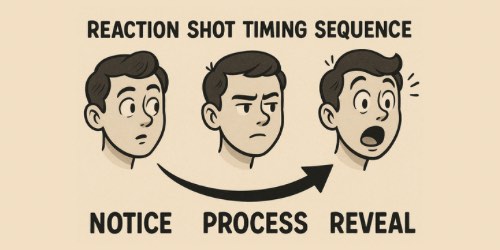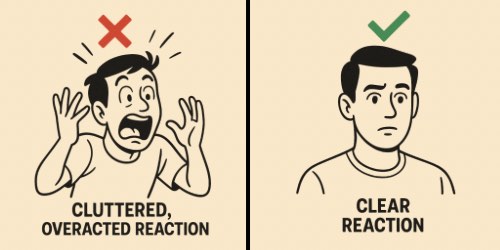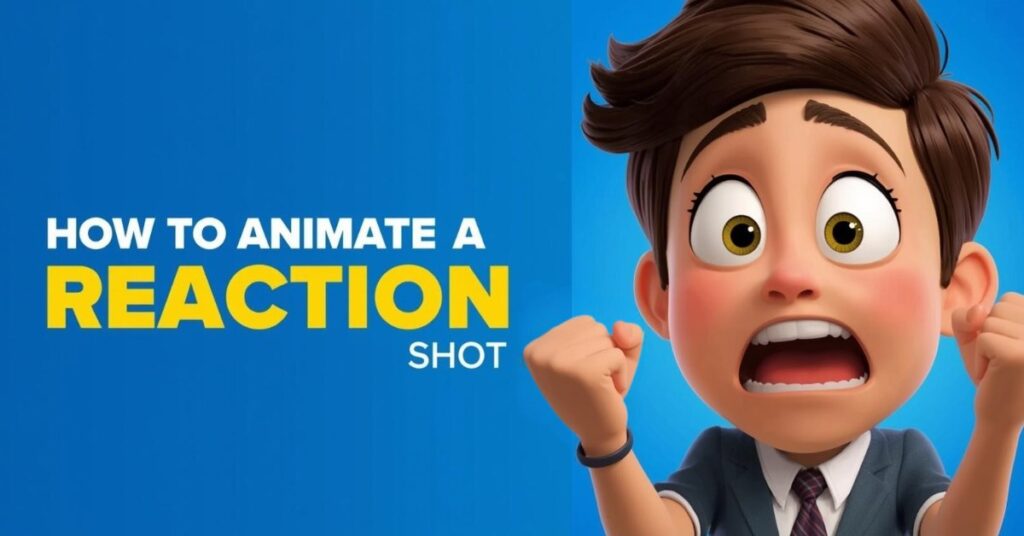A great reaction shot is where your character’s inner life shows up on screen. It’s the flicker in the eyes after a reveal, the breath that fails to land, the tiny head tilt that says, “I heard you—and it changed me.” Nail reactions and your scenes feel human; miss them and even beautiful animation can ring hollow.
What a Reaction Shot Really Does
A reaction shot translates thought into motion. It’s not just “surprise face”; it’s the chain of micro-decisions the audience reads as awareness, appraisal, and feeling. In story terms, reactions are the glue between beats—cause happens, effect happens, and the reaction makes the effect believable and satisfying by showing the character process it. When you plan reactions on purpose, your storytelling becomes clearer and your performances feel authored instead of accidental.
Use the Beat: Timing and the Power of the Pause
Strong reactions ride rhythm. Most emotional reads follow a beat pattern: notice → process → reveal. Give your character time to register the moment—often a half-beat or full beat of stillness—before anything big happens in the face or body. That pause is the “thought” your audience fills in, and it turns an expression change into a performance. If your reaction feels mushy, shorten the wind-up or add a precise stillness right where the thought lands so the payoff has contrast.

Use this as a working rule: one clear beat to notice, one to decide, one to show. You can compress or stretch those beats, but keep the order clean so the audience never has to guess what just happened internally.
Stage the Face and Eyes First
Eyes sell the thought; lids and brows sell the weight of it. Start by staging where the pupil wants to go (to the reveal, away from it, or to a remembered spot), then layer eyelids, brows, and a micro head move. Lids carry the “heaviness” of emotion, brows carry shape (surprise peaks, concern angles), and a subtle head dip or lean points the audience at intention. If the eyes read, everything else can play quieter and still land.
- Eye path: Land the gaze with a tiny overshoot and settle.
- Lid timing: Blink before or after the gaze to imply processing.
- Brow shape: Asymmetry feels human; mirrored brows feel robotic.
When face, lids, and brows each have a job, your reaction reads at a glance instead of asking the viewer to decode noise.
Let the Body Agree (or Disagree) with the Face
Tiny body cues deepen the read. A breath that stalls, a clavicle lift, a shoulder micro-shrug, fingers that lose tension—these are the supporting actors to your facial performance. Decide whether the body agrees with the face (congruent = stronger clarity) or contradicts it (incongruent = subtext). Keep the body at a smaller amplitude than the face unless the story demands a big physical beat; otherwise you’ll drown out the moment.
Clarity First: Silhouette, Contrast, and Restraint
Clarity beats complexity. Present the reaction in a readable silhouette, avoid “micro-wiggles,” and make one thing the star per beat (eyes on beat one, brows on beat two, mouth on beat three). Use contrast—stillness against change—to make small choices feel big. If everything moves at once, nothing reads; if one thing moves with purpose against stillness, the audience will feel the thought snap into place.
Common Pitfalls (and Fixes)
- Everything moves. Fix: Mute body and mouth while the eyes lead; re-introduce body a beat later.
- Late eye landings. Fix: Land eyes just before the expression change so the thought precedes the feeling.
- Floaty timing. Fix: Add a single held frame or tighter ease right at realization.
- Mouth overacting. Fix: Keep lips quieter on serious beats; let lids and brows carry the weight.
Spot and remove these four, and most “muddy” reactions become crystal clear.
A Simple Blocking Recipe for Reaction Shots
- 01 — Intent: Write the thought in one sentence (“She realizes the lie—and chooses to play along”).
- 02 — Beats: Notice → Process → Reveal—assign approximate frame ranges.
- 03 — Eyes first: Pose the gaze path with a tiny overshoot/settle.
- 04 — Lids/brows: Add lid timing and brow shape one beat later.
- 05 — Body cue: Insert a micro breath, head dip, or weight shift on the reveal.
- 06 — Polish: Remove extra motion, sharpen holds, check silhouette and contrast.
Keep this recipe next to your workspace and your reaction shots will block cleaner and polish faster.
Example Study You Can Animate Tonight
Choose a 3–5 second audio clip with a clear “aha” or “oh no.” Animate eyes landing to the sound source, hold one beat, add a lid change, then a small head motion with minimal mouth cue (or none). Keep the body mostly still aside from a breath. Aim for one strong change, not five subtle ones, and see the performance sharpen immediately.

Once you’re happy at this scale, repeat with a different emotional valence (positive vs. negative) to feel how timing and amplitude shift while the structure stays constant.
Want bite-size lessons that turn acting theory into daily animation drills?
Final Thoughts
Reaction shots are where characters prove they’re alive: thought forms, feeling follows—and we believe it because timing and staging read truthfully. Lead with eyes, back them with body cues, and let contrast carry the moment. If we can read the thought, we feel the story.




























